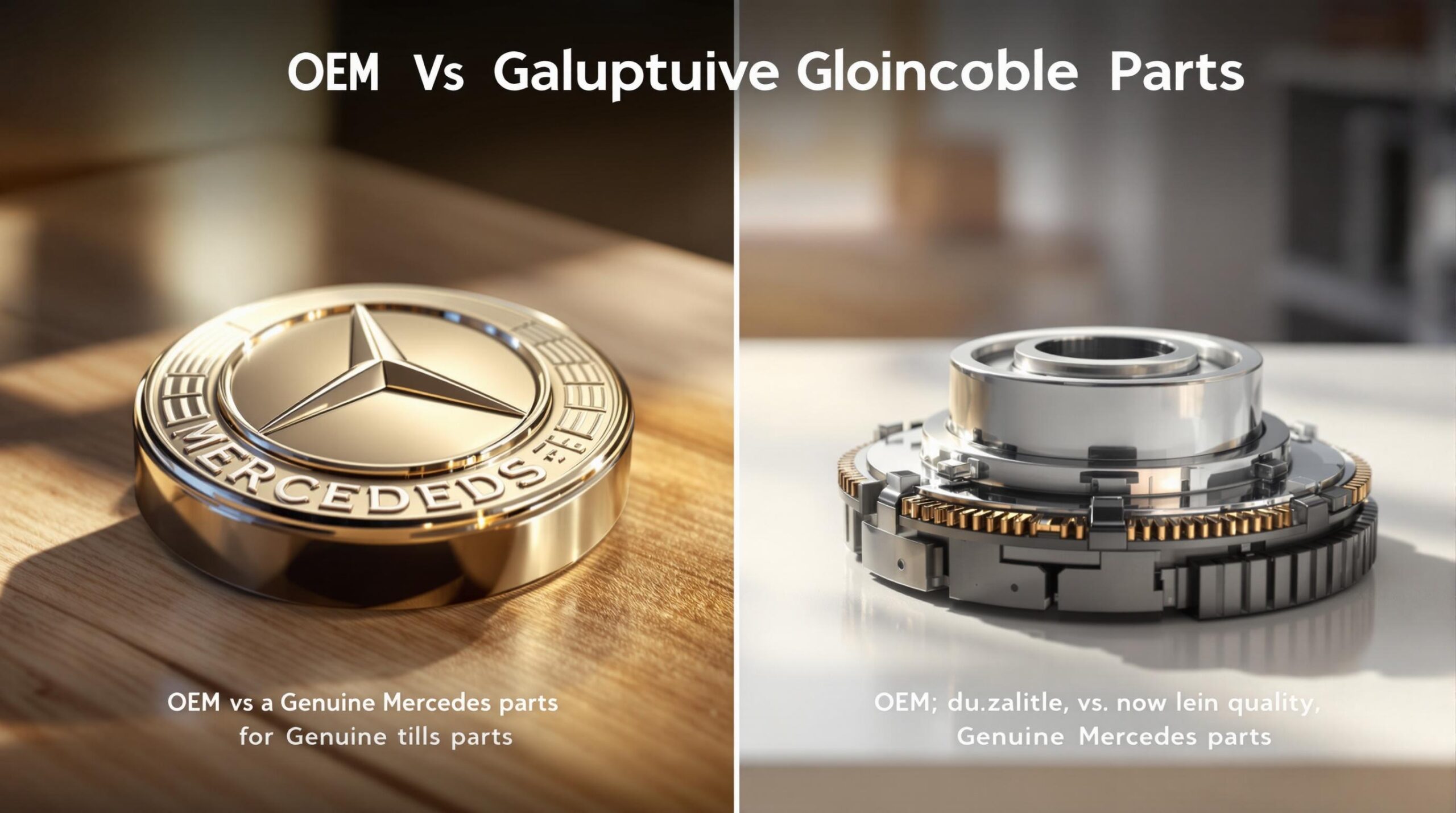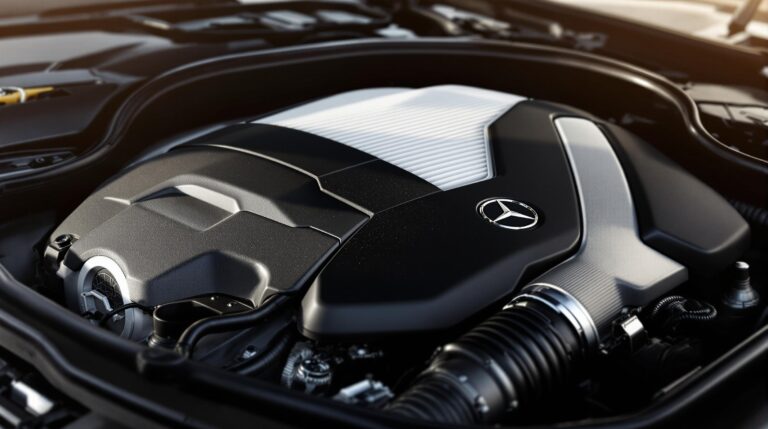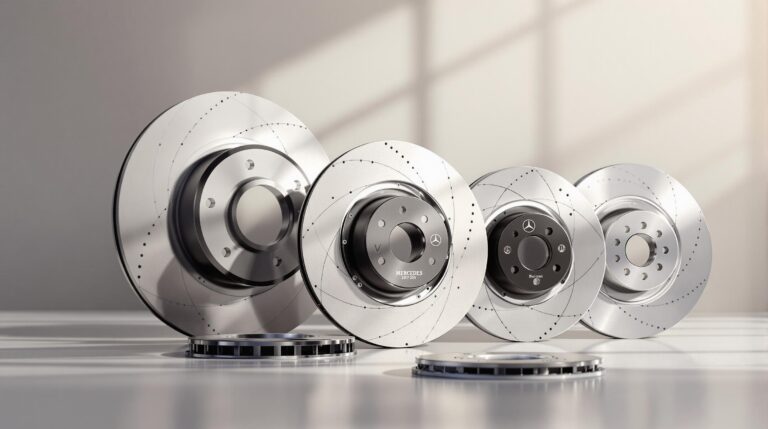OEM vs Genuine Mercedes Parts: What’s the Difference?
When it comes to maintaining your Mercedes, choosing between OEM (Original Equipment Manufacturer) and Genuine Mercedes parts can significantly impact cost, performance, and warranty compliance. Here’s a quick breakdown to help you decide:
- OEM Parts: Made by the same suppliers as Mercedes parts but lack the branding. They’re 20-40% cheaper, meet factory specs, and are great for budget-conscious repairs.
- Genuine Mercedes Parts: Come with the Mercedes logo, undergo additional testing, and ensure warranty compliance. They’re typically more durable and better for advanced systems like ADAS.
Quick Comparison
| Aspect | OEM Parts | Genuine Mercedes Parts |
|---|---|---|
| Price | 20-40% cheaper | Higher cost |
| Durability | Standard | Lasts ~30% longer |
| Warranty Compliance | May void factory warranties | Fully compliant |
| Branding | No Mercedes logo | Includes Mercedes branding |
| Electronic Parts | May require manual calibration | Pre-calibrated at the factory |
| Mechanical Parts | Similar performance to Genuine | Same performance, higher cost |
Key Takeaway: If you’re maintaining a newer model or care about warranty compliance, Genuine parts are the safer choice. For older models or budget repairs, OEM parts offer factory-quality performance at a lower price.
Main Differences: OEM vs Genuine Parts
Quality and Production Standards
OEM and Genuine Mercedes parts are designed to the same engineering standards. However, Genuine Mercedes parts undergo extra testing. For instance, Genuine Mercedes brake components must pass a 1,000-hour salt spray durability test under TÜV certification .
For electronic parts, differences can be more noticeable. Take the Mercedes NOX sensor (part number A0009056703) as an example – it lasts 35% longer when purchased as a Genuine part, thanks to Mercedes-specific firmware . On the other hand, mechanical parts like W212 E-Class spark plugs perform the same whether they’re Bosch OEM or carry the Mercedes branding .
Packaging and Brand Markings
Spotting Genuine Mercedes parts involves checking key packaging details. Here’s how they compare to OEM parts:
| Feature | Genuine Mercedes | OEM Parts |
|---|---|---|
| Part Numbers | Uses MB format starting with ‘A’ | Manufacturer-specific formats |
| Security Features | Includes silver hologram stickers | Not included |
| Packaging Color | Mercedes-branded boxes | Manufacturer’s standard colors |
Where to Buy Parts
For newer models, such as the W213 E-Class, ensuring compatibility is essential. For example, OEM compressors may need explicit verification for CANbus compatibility . Always confirm compatibility through reliable sources before purchasing to avoid issues.
Up next, we’ll dive into how these options influence costs.
How to Choose Between OEM and Genuine Parts
Price Differences
When comparing costs, Genuine Mercedes parts are typically 20-40% more expensive than OEM alternatives [13]. Take a look at this quick comparison of common replacement parts:
| Component | OEM Price | Genuine Price |
|---|---|---|
| Brake Pads | $150 | $220 |
| Air Filters | $35 | $55 |
| Control Arms | $180 | $250 |
While Genuine parts come with a higher price tag, they tend to last about 30% longer in durability tests, which can help balance out the cost over time [13]. Another factor to consider is how these choices impact warranties, especially for newer vehicles.
Warranty Coverage
Your warranty coverage can be directly affected by the type of parts you choose. Genuine Mercedes parts ensure full compliance with factory warranties for vehicles still under coverage [13].
"Mercedes-Benz vehicles are fully tested and certified as an entire assembly – aftermarket parts may compromise structural integrity and safety systems." – MBUSA Position Statement [16]
For newer cars, particularly those equipped with advanced driver assistance systems (ADAS), using non-Genuine parts could void your warranty if those parts cause system issues. If you’re relying on a third-party warranty, check their rules to see what parts are approved [13].
Mercedes Model Fit Guide
Compatibility is another big factor, especially with modern Mercedes models. Requirements can vary greatly depending on the vehicle’s generation. Here’s a breakdown:
- Electronic Components: Around 65% of electronic parts need Genuine replacements to work correctly [13].
- Drivetrain Parts: About 40% of drivetrain components require Genuine Mercedes parts [13].
- AMG Models: High-performance AMG vehicles must use Genuine AMG-branded components to meet factory standards [13].
For EQC electric models, Genuine parts are critical for maintaining key systems [16].
Related video from YouTube
sbb-itb-395e243
OEM vs Genuine Parts: Benefits and Drawbacks
When it comes to maintaining your vehicle, choosing between OEM and Genuine parts can feel like a balancing act. Recent insights from MBWorld technicians reveal that while both options offer similar reliability, they shine in different areas .
Side-by-Side Comparison
Here’s a breakdown of how these two options stack up across key maintenance factors, based on detailed testing and real-world performance data:
| Aspect | OEM Parts | Genuine Mercedes Parts |
|---|---|---|
| Quality Assurance | Meets Mercedes specs without brand backing | Includes extra Mercedes-specific testing |
| Corrosion Resistance | Standard protection | Better suited for harsh conditions |
| Software Integration | May require manual calibration | Pre-calibrated at the factory |
| Availability | Fast shipping through various vendors | Typically takes 2-5 days from dealerships |
| Price | 15-40% cheaper than Genuine parts | Higher cost due to dealer markup |
| Collector Value | No impact on resale | Adds 8-12% resale value for classic models |
This comparison ties back to warranty concerns and preserving vehicle value. For instance, firmware differences can influence sensor longevity, as demonstrated in NOX sensor testing.
Electronic components often favor Genuine parts due to proprietary software advantages. However, mechanical parts like Bosch brake pads are on par with their Genuine counterparts .
For vehicles equipped with ADAS, Genuine parts help avoid calibration problems, a common issue highlighted by TuningOnline.eu .
Conclusion: Selecting the Right Parts
When deciding between OEM and Genuine Mercedes parts, focus on three main factors:
- Vehicle technology level: Especially for models with advanced driver assistance systems (ADAS).
- Age and intended use: Older models may allow more flexibility with parts.
- Long-term ownership plans: Consider the balance between upfront costs and long-term savings.
For newer Mercedes models, particularly those equipped with ADAS, Genuine parts are often necessary. These systems, including electronic control units and safety features, rely on factory-original components to function correctly [13].
The age and purpose of your vehicle also influence your choice. For example, owners of classic models like the W126 chassis from the 1980s have more flexibility, as 89% of their mechanical components cross-reference with W124 models, according to our compatibility analysis . On the other hand, newer AMG and EQ electric vehicles depend on Genuine parts for proper sensor and system integration .
Long-term costs matter too. Genuine parts typically last 30% longer [13][15], which can offset their 20-40% higher price. Additionally, ensuring parts are authentic is increasingly important for newer models.
Here’s a quick breakdown of part selection based on vehicle type:
| Vehicle Category | Recommended Approach |
|---|---|
| Leased Vehicles | Use Genuine parts exclusively |
| Classic Cars | Combine Genuine for exterior, OEM for mechanical |
| Daily Drivers | Opt for OEM on frequently replaced items |
| Warranty Coverage | Stick with Genuine parts for covered systems |
Always double-check compatibility using Mercedes VIN decoders .
For high-performance or newer models, a smart strategy is to invest in Genuine parts for electronic and safety systems while using high-quality OEM alternatives for mechanical components. Keep in mind that some OEM parts, like alternators and electronic modules, may require dealership programming, as highlighted in our NOX sensor analysis .
FAQs
Which is better, OEM or Genuine Mercedes parts?
The choice between OEM and Genuine Mercedes parts depends on your specific needs. For newer Mercedes models (2020 and later), especially those requiring ADAS calibration, Genuine parts are often necessary . On the other hand, OEM parts from trusted manufacturers like Bosch, ZF, and Hella can deliver similar quality while being 20-40% less expensive .
Is there a real OEM for Mercedes?
Yes, Mercedes-Benz partners with several authorized OEM suppliers that produce parts meeting Mercedes’ strict specifications. To confirm authenticity, these suppliers must display manufacturer stamps, Mercedes approval codes, and ISO/TS 16949 certification .
Some OEM suppliers even provide lifetime warranties comparable to those offered by dealerships . For added assurance, you can verify parts using Mercedes’ EPC system, as previously discussed . This helps ensure you’re purchasing genuine OEM components instead of counterfeit ones.







